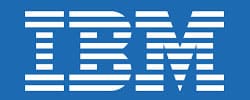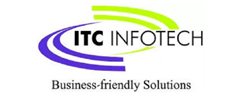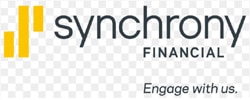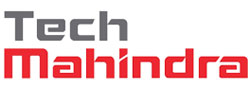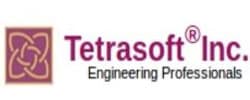Home / Business Intelligence Courses / Power BI
SQL Server Training in Hyderabad
This course covers Microsoft SQL, T-SQL related to OLTP and OLAP databases with Detailed Materials, Software Installation and Videos.REAL-TIME PROJECT and SCENARIOS will help.
Classroom | Online | Fast Track | Self Paced






Frequently Asked Questions
What is SQL Server and What are it's uses?
Microsoft SQL Server is a relational database management system developed by Microsoft. As a database server, it is a software product with the primary function of storing and retrieving data as requested by other software applications—which may run either on the same computer or on another computer across a network.
Is SQL Server easy to learn?
Does SQL Server have a market?
What if I miss a training session?
No need to worry, daily videos are in the class room folder and materials in the materials folder. You can watch and practice and also reach out to the trainer for queries.
What type of study materials and videos we will get and how long they are available?
You will get all materials after a week of your joining which you can download and use. Daily live class recordings will be placed in a folder and you will have access for maximum 12 months. Lab practice documents and required Power BI credentials provided for practice till one year.

In-Depth Curriculum
Our educational program aims to comprehensively cover all & important points & aspects of the subject
Course Specialized Trainers
Our Trainers are high experienced industry experts with their teaching methods designed for their particular course
10+ Years of Experience
We’ve come a long way teaching from hundreds to thousands, so we use our experience in guiding students in the right path
Students Favourite
Vinay Tech House is prefered by many students as their favourite, rating as the best in teachingData warehouse Fundamentals
- Data warehouse, Data Mart and differences
- Types of data marts and real-time usage
- ODS, Stage, EDW, and DW definitions
- Data Lake and Blob Storages
- DWH Life Cycles
- DWH Approaches (INMON and KIMBALL)
- Data Granularity, Data movement stages
SQL Introduction
- What is Sql
- How many areas we can use sql to communicate with Databases
- Sql Versus T-Sql
- Various Tools and Utilities to write Sql
SQL Server Introduction, Pre-Requisite & Installation
- Server name or Instance name and authentication
- Versions and Editions in SQL Server
- Connections [Local and Remote]
- Enterprise Edition
- Standard Edition
- Developer Edition
- Work Group Edition
- Express Edition
- Sql Server and SSMS Installation
- Sql Server Management Studio
- Object Explorer
- Query Editor
- System Databases and User Databases
- System tables and User tables
Databases & Tables
- System Defined Databases and usages
- User defined databases and usages
- Master, MSDB, TEMPDB and others real-time usage
- Database creation GUI and Code [MDF & LDF files]
- SQL Server Agent usage
- Windows Vs. Sql Server Authentication
- System tables and User tables
Command, Query & SQL Server Architecture
- Differences between command and query
- Query and command execution in SQL Server
- Parser, Compiler, Syntaxer, Optimizer, and CLR
- Storage Engine [SQL Engine]
- Lock, File, Transaction Manager, and BUffer Manager
- Buffers and Threads
- Data types impact internal process
SQL Sub Languages
- Sql Server Data Definition Language[DDL]
- Sql Server Data Manipulation Language[DML]
- Sql Server Data Control Language[DCL]
- Sql Server Transaction Dictionary Language[TCL]
Data Definition Language
- Creating Table Definitions [CREATE]
- Modifying Table Definitions[ALTER]
- Removing Table Definitions [DROP AND TRUNCATE]
- TRUNACTE and DROP performance differences
- Sql Server Data Types
- Create table from another table
Data Manipulation Language
- Inserting data into table [SELECT, INSERT and SELECT]
- Single Insert and Multiple Inserts
- Modifying table data [UPDATE]
- Removing table data [DELETE]
- BULK INSERT and BCP [Bulk Copy Program]
- MERGE comand operation and Incremental Load [SCD and CDC]
- Sql Server Data Types
- Insert table from another table
Data Control language
- Providing privileges [GRANT]
- Removing privileges [REVOKE AND DENY]
Transaction Control Language
- Saving work [COMMIT]
- Restore work [ROLLBACK]
- Saving period of work [SAVEPOINT]
Data Filtering [ Various Clauses ]
- =, !=, <>, >, <, <=, =< etc... comparison Operators
- AND, OR, NOT Logical operatos
- +, -, *, / , Mod, Exp etc...Mathematical Operators
- Order By, Top, Where, From and Like
- Group By and Having
- IN, NOT IN, BETWEEN and NOT BETWEEN
- ISNULL and NOT ISNULL
Multiple Table Operations [ Column Wise-Sub Queries ]
- Simple Sub Query
- Correlated Sub Query
- Differences between simple and correlated
- Nested Sub Query
- Working on TOP, MAX, and MIN real time queries
Multiple Table Operation [ Rose Wise-Set Theory ]
- Set theory generic protocols
- INTERSECT
- UNION
- UNION ALL
- EXCEPT
- Working on incremental loading
Multiple Table Operations [ Column Wise-Joins ]
- JOINS real time usage
- CROSS JOIN and CROSS APPLY
- INNER JOIN[EQUI, NON EQUI]
- NATURAL JOIN
- SELF JOIN
- INNER Vs. OUTER JOIN
- LEFT OUTER JOIN
- RIGHT OUTER JOIN
- FULL OUTER JOIN
- Working on ON and WHERE clauses
- MERGE JOIN
- LOOP JOIN
- HASH JOIN
- Unmatched data retrieval
- Incremental load in real time using Joins
Business Data Constraints & Data Rules
- CHECK, NOT NULL, AND DEFAULT – Domain Integrity
- Primary Key usage and limitations
- Unique Key usage And limitations
- Referential Integrity and FORGINE KEY
- Candidate key and Alternate key
- Normal column and Identity column
- Surrogate key and Identity column usage
- CASCADING OPTIONS
- ON DELETE CASCADE ON UPDATE CASCADE
- ON DELETE SET NULL
- ON UPDATE SET NULL
- ON UPDATE SET NO ACTION(Default)
Indexes [ basics to advanced ]
- Clustered Index Design and Structures
- Nonclustered Index Design and Structures
- Unique Index Design
- Index with Included Columns
- Column storage index
- Full-Text Index population
- Filtered Index Design
- Covering Index Design
- B-Tree and Online Indexes
- Indexed views Vs. Materialized views
- Fill Factor, TEMPDB, Pat_Index
Normalization & Data Modelling
- Data model usage in projects [OLTP and OLAP]
- Data model types and differences
- Database Diagrams and ER Modeling
- ER Modeling tools
- 1st, 2nd, 3rd Normal Forms Usage
- Boyce-Codd Normal Form Usage
- Relationship Types
- One To One One To Many
- Many To One
- Many To Many
Schemas, Synonnys, System Defined Views & Procedures
- What is Schema? and real time advantages with practical.
- What is Synonym? and real time advantages with practical.
- System Defined Procedures usage with examples
- sp_help
- sp_helpdb
- sp_helptext
- sp_rename
- sp_recompile
- sp_tables
- System Defined Views usage with examples
- sys.tables/li>
- sysjobactivity
- sysssislog
Distinct, Group, Rollup & Cube
- Differences between GROUP BY and DISTINCT and performance impact
- GROUP BY and HAVING usages to identify and eliminate duplicates ROLLUP and CUBE usages
- Generating FULL TOTALS and SUB TOTALS
- Comparing ROLLUP, CUBE and GROUP functions
Views [ User Defined ]
- Advantages Of Views in SQL
- Tables Vs. Views
- Complex View (Non Updatable View)
- Materialized Vew and real time usage
- Encrypted views Vs. Cascading views
- Limitations Of Views
Functions [ System, User Defined & Analytical ]
- Date and Time Formats and Functions
- Scalar - Valued Functions
- Table - Valued Functions
- String Functions
- SUBSTRING, REPLICATE, REPLACE
- REVERSE, CHARINDEX
- LEFT, RIGHT, LEN
- DFFERENCE, SOUNDEX
- STRING_SPLIT
- Mathematical Functions
- ABS, ROUND, LOG
- FLOOR, CEILING
- SUM, AVG, MAX, MIN, COUNT
- SQUARE ROOT, SQUARE
- SIN, TAN, COS
- Date Functions
- DATEADD, DATE DIFF, DATE PART
- NOW, DAY, MONTH, YEAR
- GETUTCDATE, GETDATE, CURRENT_TIMESTAMP, SYSDATETIME
- DATE NAME, ISDATE
- WEEKDAY, MONTHNAME, WEEKDAYNAME
- SECOND, MINUTE, HOUR, ISDATE
- Other Generic Functions
- REVERSE, CHARINDEX
- COALESCE, NULL IF, CURRENT USER, IIF
- ISNULL, NULLIF, SESSION_USER
- SESSIONPROPERT, SYSTEM_USER, USER_NAME
- FORMAT, INSTR, CONCAT,
- Cast and Convert Functions
- IF, ELSE, CASE, WHEN & END
- PIVOT & UNPIVOT
- ANALYTICAL FUNCTIONS
- ROW_NUMBER() and real time examples
- RANK() and real time examples
- DENSE RANK() and OVER () usages
- NTILE advantage
- PARTITION BY advantage
- Using Group BY along with Analytical Partition
- User Defined Functions Create
- Cast and Convert Functions
- User Defined Functions Calling
- Differences between Function and Procedure
Stored Procedures [ User Defined ]
- Use in Real Time and Types
- System Defined and User Defined Procedures
- Dynamic SQL Queries in Procedures
- IN, OUT, INOUT Parameters
- Compare Procedures and Functions
- READONLY Parameters
- Dynamic Data Insertions with Procedures
- Table Variables, Cloning & Data Inserts
- Using TEMP tables in procedures
- Mathematical Functions
- Stored Procedure inside Stored Procedure
- Optimizing tips for procedure
Variables, Tables [ Different Types ] & CTE
- Local variabes vs Global variables with examples
- Local variables Vs. Temp variables and real time usage
- TEMPORARY table usages in real time
- Inline View Vs. Normal View
- CTE: Common Table Expressions
- CTE usage in real time
- Multiple examples using CTE
- ROW_NUMBER() with CTE Queries
- Recursive
Triggers
- Use in Real Time and Types
- SCHEMA BINDING
- Triggers Vs. Procedures
- Types of triggers
- TRIGGERS
- DDL TRIGGERS
- FOR TRIGGERS
- INSTEAD OF TRIGGERS
- Rel-time usage of triggers at eventsli>
Cursors [ User Defined ]
- What is cursor and advantages of it.
- Cursor Vs. STored Procedure
- Working on different types of cursors
- Static Cursors
- Dynamic Cursors
- Global Cursors
- Local Cursors
- Forwardonly Cursors
- Scroll Cursors
- Keyset Cursors
- Cursor detailed process and phases
Transactions, Checkpoint & DTC
- What is Transaction? usage of it?
- What is DTC [Distributed Transaction Coordinator]
- What is Checkpoint? usage of it?
- Transactions Vs. Checkpoint
Programming & Error Handling Intructions
- IF, IIF, CASE
- WHILE, WHEN
- Error Handling in T-SQL
- Try, Catch, Throw
Performance Tuning & Optimization process
- Examples of performance issues in real time
- DTA (DB Engine Tuning Advisor)
- Audit Long Running Queries using DMVs and DMFs
- Activity Monitor Tool and Query Statistics Reports
- Logical I/O, Physical I/O and Database I/O, Wait Time
- Partition Functions and Partition Schemes - Usage
- Index Management : Internal, External Fragmentation
- Index Page Count and Index Condition Checks
- ONLINE and RESUME Options
- Fast, Detailed Scans and Stats NoRecompute usages
- Creating Workload Files and Trace Files
- DTA with Query Cache (Procedure Cache) & .SQL File Inputs advantage
- Full Text Search (FTS) Mechanism advantage
- Processor, Disk, Memory, Transactions, Database Counters
- Query Costs : IO, CPU Cost, SubTree Cost, Operator Cost
- Parameter Sniffing and OPTIMIZE Options
- Spooling Mechanism and Spool Types for Query Loads
- Execution Plan Issues with Parameter Sniffing
- Query Blocking Scenarios and Lock Monitors
- Serializable, Snapshot, Repeatable Read Isolation
- Deadlock Simulation and Deadlock Prevention usage
- Full Text (FT) Indexes : Query Tuning. Filter Daemon Host
- Histograms and Event Handling Options
- Working with SQL SERVER Profiler
- Using Perfmon Tool and AM Tool
- Implementing Compressions for Read Only Dat
- Parameter Sniffing and OPTIMIZE Options
- Implementing environment areas in the real time [DEV, TEST, UAT, and PROD]
Invoice OLTP Database
Designing the Database from End to End, ER-Model preparation & Data Loading
Sales OLAP Database
Moving Data from Source Database to Target Database by using Stored procedure

Our Student Say!
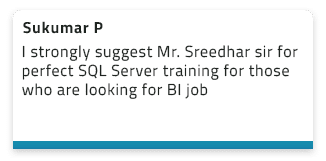
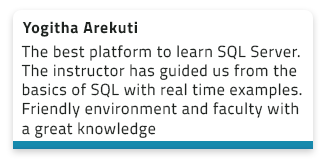
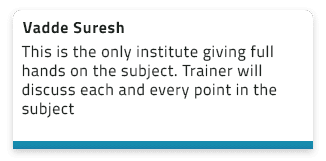
Our Learners Work At



